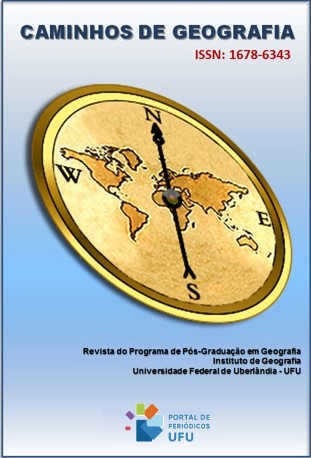LAND USE AND OCCUPATION DYNAMICS IN THE COSTA DO DENDÊ REGION, BAHIA STATE, BRAZIL, BETWEEN 1985 AND 2023: AN ANALYSIS OF THE SOCIOECONOMIC AND ENVIRONMENTAL REFLECTIONS ON A REGIONAL SCALE
DOI:
https://doi.org/10.14393/RCG259970407Keywords:
Supervised classification, Bahia, Environmental planning, Land use, Coastal regionAbstract
The Palm Coast Region, State of Bahia, is made up of eight municipalities: Valença, Taperoá, Cairu, Nilo Peçanha, Ituberá, Igrapiúna, Camamu and Maraú, a region nationally and internationally recognized for the value of its natural heritage. Given the process of historical-regional formation, it is recognized as necessary to identify the dynamics of appropriation of this territory, supported by a socioeconomic and environmental analysis. To achieve the proposed objectives, demographic and economic data from IBGE (2010, 2016, and 2023) were used, and five temporal scenarios were mapped (1985, 1995, 2005, 2015, and 2023) using images from the Landsat satellite classified by the Maximum method Likelihood. The results point to the increase in agroforestry areas and urban areas to the detriment of the destruction of forested areas and mangroves, which culminates in the reduction of springs, silting of river channels, filling of mangroves and coastal erosion, in addition to the exploitation of cultural heritage in this territory. Such impacts reflect decisions by economic agents, such as investment in road structures, the insertion of food production, industrialization activities, and massive investment in real estate tourism. It is recommended that such activities be regularized and conservation measures adopted given the ecosystem services provided by traditional communities present in the area.
Downloads
Downloads
Published
How to Cite
Issue
Section
License
Copyright (c) 2024 Sarah Andrade Sampaio, Regina Célia de Oliveira, Sirius Oliveira Souza

This work is licensed under a Creative Commons Attribution-NonCommercial-NoDerivatives 4.0 International License.
Autores que publicam nesta revista concordam com os seguintes termos: a) Autores mantém os direitos autorais e concedem à revista o direito de primeira publicação, com o trabalho licenciado sob a Creative Commons Atribuição-NãoComercial-SemDerivações 4.0 Internacional. b) Autores têm permissão e são estimulados a publicar e distribuir seu trabalho online (ex.: em repositórios institucionais ou na sua página pessoal), já que isso pode gerar alterações produtivas, bem como aumentar o impacto e a citação do trabalho publicado. c) Em virtude de aparecerem nesta revista de acesso público, os artigos são de uso gratuito, com atribuições próprias, em aplicações educacionais e não-comerciais.











